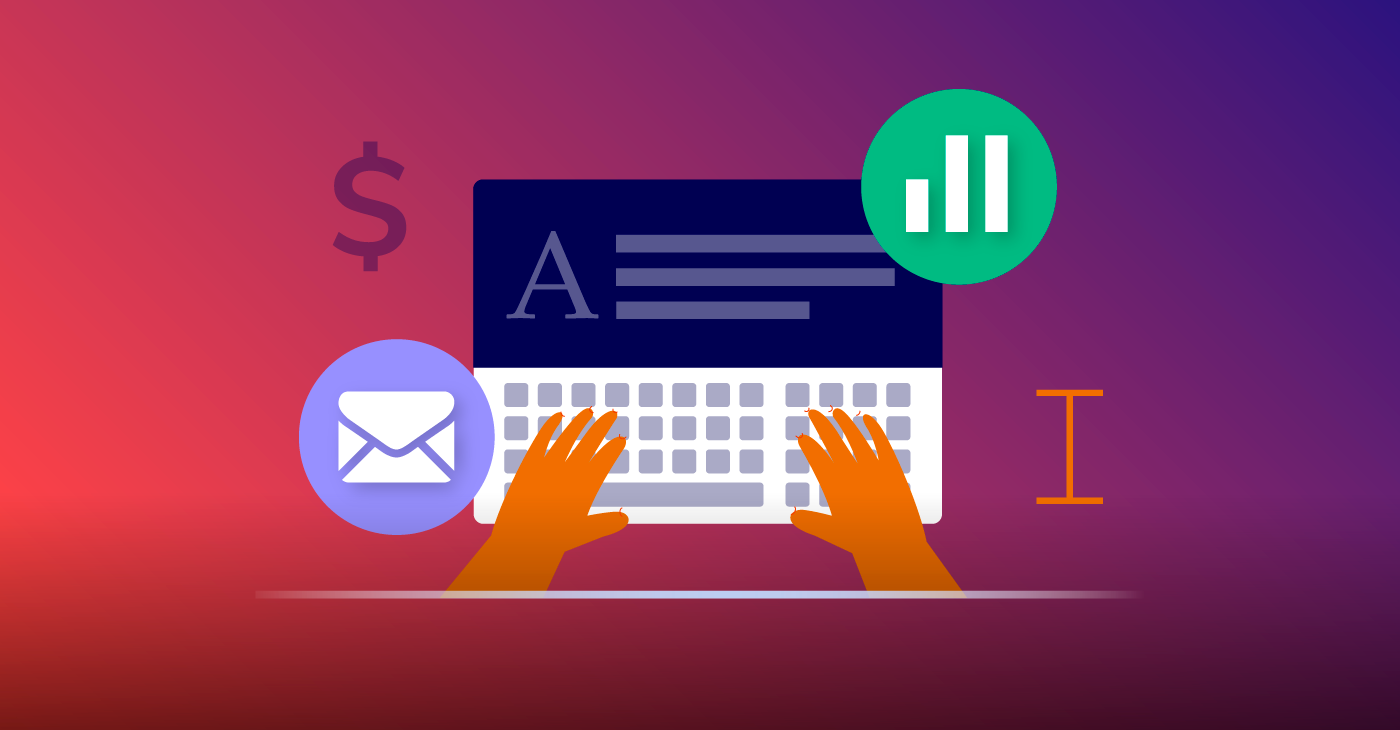4 Strategies to Improve Email Engagement for Your Retail Brand
January 19, 2022 4 min read

With more people online and utilizing social media to help ease the pandemic boredom, retail companies have a lot of opportunities to capitalize on online engagement. However, nothing beats email marketing, as it’s a direct line to these online consumers, and it’s a form of marketing that people actually opt into.
Getting a customer to subscribe to your newsletter is only the first step; you have to get them to engage with your content by clicking on your promotions, purchasing new items, or forwarding your emails to their friends and family.
As we all know, getting attention is great, but keeping it is even better. Here are three strategies to further improve email engagement for your retail brand.
1. Offer Incentives
Incentives are a great strategy that can be implemented at various stages of the buyer’s journey.
When someone visits your site, offer a discount if they enroll in your email marketing. Once they subscribe, you can email them or text them the discount code that can be applied at checkout. This not only helps initiate a sale, but you’ll effectively grow your email list so you can continue to engage with these new purchasers.
Take advantage of holidays, birthdays, or company anniversaries to send your customers special discounts or promotions. Or, offer a special discount code for them to share with a friend that you can track. This is also a great way to grow your list and get more subscribers tapped into your retail brand.
Andre Oentoro from Breadnbeyond says, “The key to success when it comes to improving email engagement for retail brands is to figure out what types of messages resonate with the audience. It’s best to consider timeliness, value, and revenue-driving. For instance, you should create messages that offer value and information that benefits the audiences and make sure it’s relevant to what’s going during a particular time of the year or what’s happening in the world in general. Last but not least, put some revenue-driven components such as a call-to-action to invite the audience to take action.”
If you’re testing out an incentives campaign, it doesn’t hurt to try different email subject lines using A/B testing. This will help you discover which incentive is most effective with your customers and which kind of language they respond best to. Use your findings to inform your future campaigns.
2. Personalize and Segment
Your subscribers want to feel like their unique needs are being met. They respond better when the emails they receive feel tailored to their particular preferences. In fact, 80% of consumers are more likely to purchase from a brand if they offer them a tailored experience.
This is where email personalization comes in. Email personalization is when your emails are different based on who they’re being sent to. But, you can’t personalize your emails without segmenting your list.
List segmentation allows you to use certain qualifying factors, like region, past purchases, industry, or site behavior, to organize your contact list into various segments. Each segment shares the designated qualifiers, allowing you to send them the emails that are most likely going to resonate with them. For example, if someone buys a new beauty product every month, send them regular updates on your beauty line so they can get first dibs on any new releases or promos.
All subscribers of your newsletter may be interested in your brand, but they’re all going to be focused on different products or services. Segmentation will help you break down the interests of each subscriber, so you can speak directly to them with an offer they’ll be more inclined to pounce on.
Ebnu Sudarso from Milkwhale understands the importance of a personal touch. “Although most email marketing campaigns blast their emails to massive amounts of people at the same time, it’s important to still add personal touches to emails, such as addressing recipients by their first names, sounding a bit personal and not robotic, and keeping in mind what your audience wants to see more of in these emails. Make sure that the emails you’re sending add value; otherwise, they’ll just go to the spam folder.”
3. Use Automation
Online shoppers sometimes need a little push to purchase a product they’ve had their eye on. Automation can help add that extra nudge. If a customer visits your site more than once from your email newsletter, fills their cart but doesn’t purchase your product, automate a cart abandonment email that reminders them about everything they left behind.
A tactic mentioned earlier was converting potential customers by offering a special promotion on their first purchase. If they purchase a new product, automate an email with an offer for free shipping on any products they buy in the next 24 hours.
Automation is a great tactic for online retail brands. When your email automations are set up correctly, you’re able to capitalize on selling opportunities that would otherwise go overlooked. Automation is like having an extra eCommerce sales teammate in your corner.
4. Showcase Third-Party Credibility
Nothing shows retail customers and potential customers how well your products satisfy needs like customer testimonials and reviews. Putting this kind of third-party credibility front and center in your emails will not only engage your recipients but will help convince them that your products are worth the hype.
Natasha Rei from Explainerd believes that social proof is a great tactic for email engagement. “Social proof is essential for retail brands to gain trust from the audience, especially those who have never encountered the brand. Make sure that you provide customer testimonials in a way that attracts recipients from the get-go. Use images instead of written text to capture their attention.”
Online shoppers will return again and again if you keep offering them special offers that they can’t pass up. Don’t be afraid to combine these strategies—it might create unexpected rewards!






